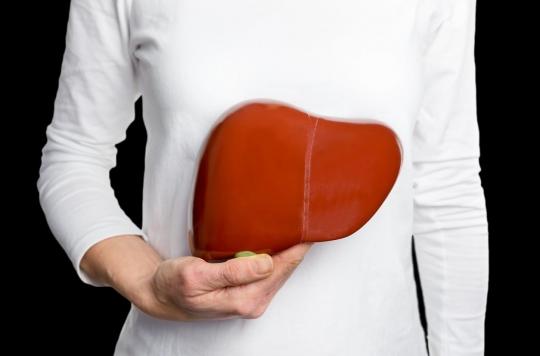Researchers have found that in rats with hepatic encephalopathy, brain changes occur even before the first symptoms appear.

The liver is essential for the body: it acts as a filter at the rate of approximately 1.7 liters per minute. Also, when he is sick, many undesirable substances enter the human body and can cause psychological, motor and neurocognitive disorders. For example, when the liver is malfunctioning, too much ammonium can reach the brain, which produces too much glutamine production and can trigger cerebral edema or hepatic encephalopathy. This neuropsychiatric syndrome can lead to coma.
Researchers from Swiss universities have taken an interest in how this disease works. According to their study to be published in the September edition of Journal of Hepatology, it would reach the brain even before touching other organs. Ultimately, this discovery could make it possible to detect brain damage linked to liver disease by brain analysis, even before the first symptoms.
For eight weeks, the researchers observed rats with chronic liver disease. “We followed each animal individually by placing it every two weeks in a high magnetic field MRI (9.4 Tesla) to perform high resolution spectroscopy (SRM), allowing us to observe very precisely the alterations molecules of the brain from the onset of liver disease. And we have made unprecedented observations!”, explains Dr. Cristina Cudalbu, scientific researcher and operational manager of the 9.4T MRI at the Biomedical Imaging Center at the Swiss Federal Institute of Technology in Lausanne (EPFL).
Less vitamin C and creatine
Because the researchers discovered molecular changes in the animals’ brains as early as the second week of liver disease. Either before the rats even show physical symptoms. “Based on previous studies, we thought it took about six weeks to see an impact, or the beginning of the deterioration in the animal’s state of health,” says Cristina Cudalbu.
This degradation finally began to appear between the fourth and eighth week. The animals then presented states of jaundice and malnutrition, suffering from water in the belly. “From that moment, we observed in the brain that in addition to an excess of ammonium, the level of two other molecules suddenly dropped: vitamin C, an antioxidant, and creatine, which fulfills multiple functions, particularly energy. “, explains Olivier Braissant, professor in the Clinical Chemistry Department of the Vaud University Hospital Center (CHUV) and at the Faculty of Biology and Medicine of the University Center of Lausanne (UNIL).
This is the first time that researchers have demonstrated the involvement of these two molecules in hepatic encephalopathy. According to them, they appear after the rise of ammonium in the blood.
See if human brain damage is similar to that of rats
Thus, an analysis of the brain by MRS could make it possible to detect the neurological manifestations of a chronic liver disease before the arrival of the first symptoms. But the researchers would also like to determine whether it would be possible to protect the brain from this deterioration or to reduce it, for example by compensating for the lack of creatine and vitamin C with supplements or probiotics. “We are also in train to make similar observations in humans, to see if the brain damage is similar to that of rats,” they conclude.
At present, the diagnosis of hepatic encephalopathy takes place from the symptoms and the results of examinations (blood tests, mental examination, electroencephalography, etc.). The manifestations of this complication, which occurs as a result of acute liver failure or chronic hepatitis, are mainly reflected in the deterioration of the cerebral functioning of the patient whose consciousness is disturbed. At first, he may exhibit mood swings and impaired judgment. He finds it increasingly difficult to sleep, becomes depressed, anxious or irritable and may have trouble concentrating.
A curable syndrome
As the affliction progresses, his breath will begin to smell sweet and musty. Then, he will struggle to keep his hands in a stable position by stretching his arms and will present involuntary muscle twitches. Speech also slows down and the patient is increasingly disoriented, agitated, excited. Sometimes the progression of hepatic encephalopathy is such that the affected person loses consciousness and falls into a coma, which usually leads to death.
But fortunately, treatments exist to cure hepatic encephalopathy. The doctor will then try to eliminate the toxic substances from the patient’s intestines. For example, he may prescribe antibiotics, subject him to a diet low in meat and other animal proteins and give him lactulose. Ingested, this synthetic sugar acts as a laxative by accelerating the passage of food and thus reducing the amount of ammonia absorbed by the body.

.















